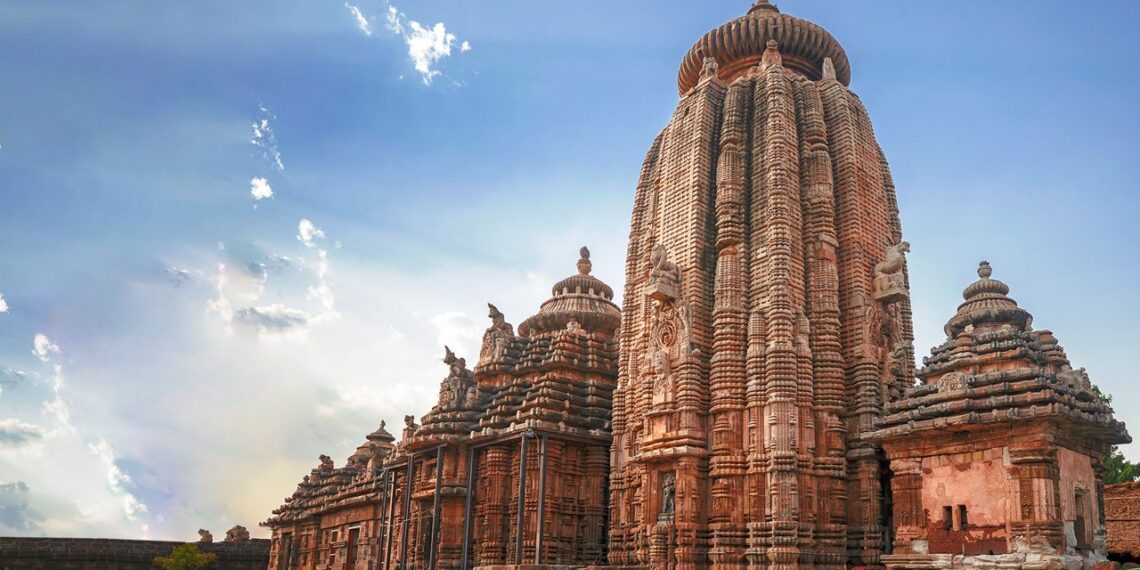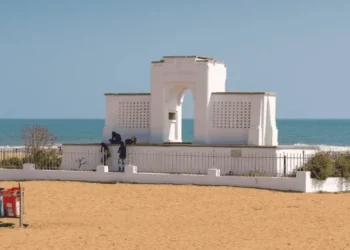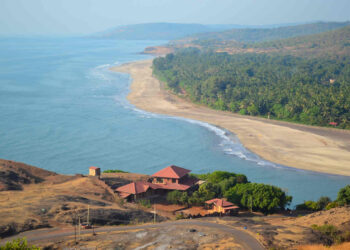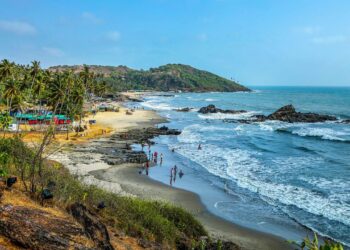Ananta Vasudeva Temple rests in Bhubaneswar, Odisha, an old town, 1 km from the city center. Dedicated to Lord Vishnu, this temple reflects Kalinga art. Its stone walls and holy yard draw devotees and travelers. Known for its divine peace, it stands as a gem among Odisha’s shrines. If you wish to visit this sacred place, here is a simple guide on its story, look, prayers, and how to go.
Fun Fact: The temple is named “Ananta Vasudeva,” meaning “endless Vishnu,” for the Lord’s eternal presence, as locals believe.
Mythological Importance
Ananta Vasudeva carries various tales and legends. One legend says Vishnu appeared here as a radiant idol to bless a sage who prayed by the Bindusagar Lake. Another tale, from local lore, tells of Queen Chandrika, who built the temple in the 13th century to honor Vishnu’s love for his devotees. Some say the temple’s idol, showing Vishnu with Lakshmi and Balarama, brings prosperity. Locals believe the temple’s yard holds divine power, giving calm and strength. This makes it a key Vishnu shrine, tied to grace and devotion.
Historical Overview
The temple began in the 13th century, under the Eastern Ganga dynasty. Bhubaneswar was a holy city, old texts say. A stone from 1278 CE near the temple marks its start, per Odisha Tourism. Queen Chandrika, daughter of King Anangabhima III, built it, carvings show. In the 1500s, local chiefs added halls, temple logs note. By the 1700s, it was a busy pilgrimage spot. In the 1800s, priests kept prayers alive. After 1947, Odisha’s leaders took over. Now, the Endowments Department runs it. From 2000 to 2010, they fixed paths but kept the old stone look. Odia saints like Chaitanya sang of Vishnu here, spreading its fame. Today, it pulls thousands to Bhubaneswar’s sacred land.
The temple’s past is deep. Some say it replaced an older Vishnu shrine, as per Incredible India. In the 1900s, British scholars noted its art, calling it a Kalinga treasure. Recent digs found coins from 1200 CE, proving its age. The temple’s link to Bindusagar Lake, where devotees bathe, adds to its holy role, Travel India says.
Architecture of Ananta Vasudeva Temple
Ananta Vasudeva Temple, on 2 acres, shows Kalinga art in every stone. The tower, or deul, from 1278 CE, is 60 feet high. It has carvings of Vishnu with his conch, Lakshmi with a lotus, and Balarama with a plow, in gray sandstone. A small porch leads to the sanctum, where a 5-foot Vishnu idol sits with Lakshmi and Balarama, under a stepped roof, lit by oil lamps. The sanctum’s walls, worn by time, hold etchings of Vishnu’s ten avatars, a Kalinga mark.
Small shrines for Garuda and Hanuman sit in the yard. The Garuda shrine, from 1300 CE, shows the eagle mount with wings, for devotion. The Hanuman shrine, near the gate, has him with a mace, for strength. These shrines add to the temple’s prayers. The hall, or jagamohana, has pillars with fish and flower carvings, pure Kalinga style, per Incredible India.
In Bhubaneswar’s old town, you reach the temple by Bindusagar road. Stone paths, worn by pilgrims, pass the lake with old steps. The temple yard, with rough stone, feels holy. Neem and tulsi plants give shade. A small tank, linked to the lake, is for ritual baths, its edges carved with waves, a Kalinga touch. Low walls have niches for minor gods, like Ganesha, guarding the place.
Carvings on walls show Vishnu’s tales—his Krishna form, his Narasimha roar, his bond with Lakshmi—to teach faith. The tower’s curves mimic Odisha’s rivers, Odisha Tourism notes. In 2010, new paths were added, but the yard stays calm, good for prayer.
Rituals and Festivals
The temple holds festivals with great celebration. Janmashtami, in August or September, is biggest, honoring Krishna with songs and swings for the idol. Rath Yatra, in June or July, sees a small chariot procession. Deepavali, in October or November, lights lamps by the lake. Daily prayers include morning chants, offerings, and evening lamp rituals. You can book services like Abhishekam or Vishnu Sahasranama at the temple office, ₹100-500. A stall gives free kheer as prasad. On Thursdays, devotees offer tulsi leaves for wealth.
The temple hosts Odissi dance shows in December, per Travel India, blending art and faith. These events draw locals and tourists, adding to the temple’s charm.
Information for Travelers
Hours and Entry: Open daily, 6:00 AM to 12:00 PM, then 3:00 PM to 8:00 PM. Entry is free, but rituals cost ₹100-500. Photos are fine outside, not in the sanctum.
Clothing: Wear simple clothes covering shoulders and knees. Men for rituals wear dhotis, often no shirt, as custom.
How to Get There:
Air: Biju Patnaik Airport, 5 km away, is closest. Taxis take 15 minutes, ₹200-300.
Train: Bhubaneswar Railway Station, 2 km away, connects to Kolkata (7 hours) or Delhi (24 hours). Autos cost ₹40-80.
Road: Baramunda Bus Stand, 7 km away, links to Puri (1.5 hours). Autos from city center cost ₹20-40.
Best Time to Visit:
October to March, 20-30°C, is cool. Weekdays are quiet. Janmashtami and Rath Yatra are busy, so book early.
Nearby Attractions:
Lingaraj Temple, 1 km away, is a grand Harihara shrine.
Mukteshwar Temple, 1 km away, is a Shiva site.
Rajarani Temple, 2 km away, hosts music festivals.
Dhauli Stupa, 8 km away, is a Buddhist peace spot.
Udayagiri Caves, 7 km away, are old Jain sites.











